#black hole and universe
Text
5K notes
·
View notes
Text
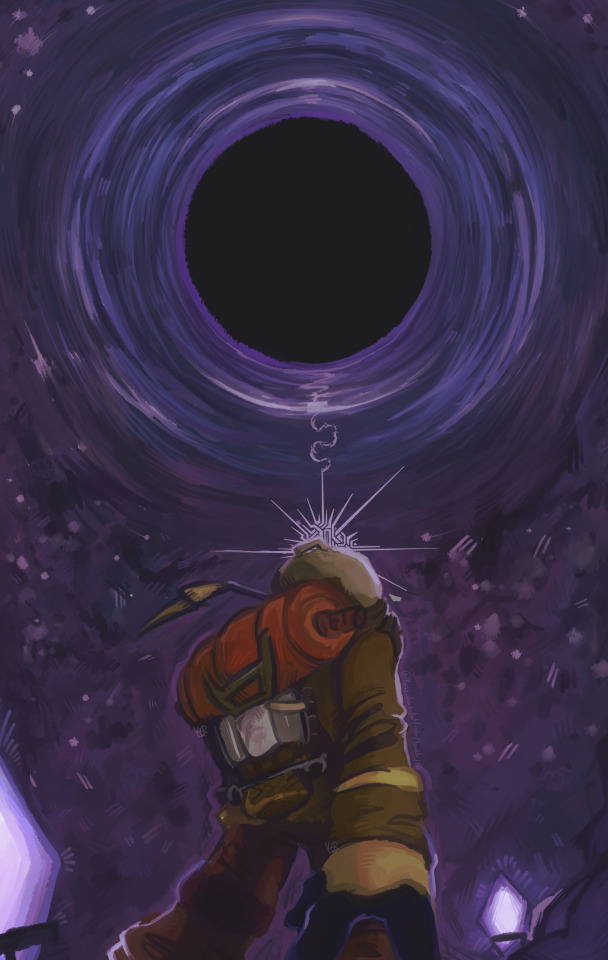
A lovely view.
#outer wilds#outer wilds spoilers#brittle hollow#black hole#eye of the universe appearance#art#artists on tumblr#digital painting
546 notes
·
View notes
Text
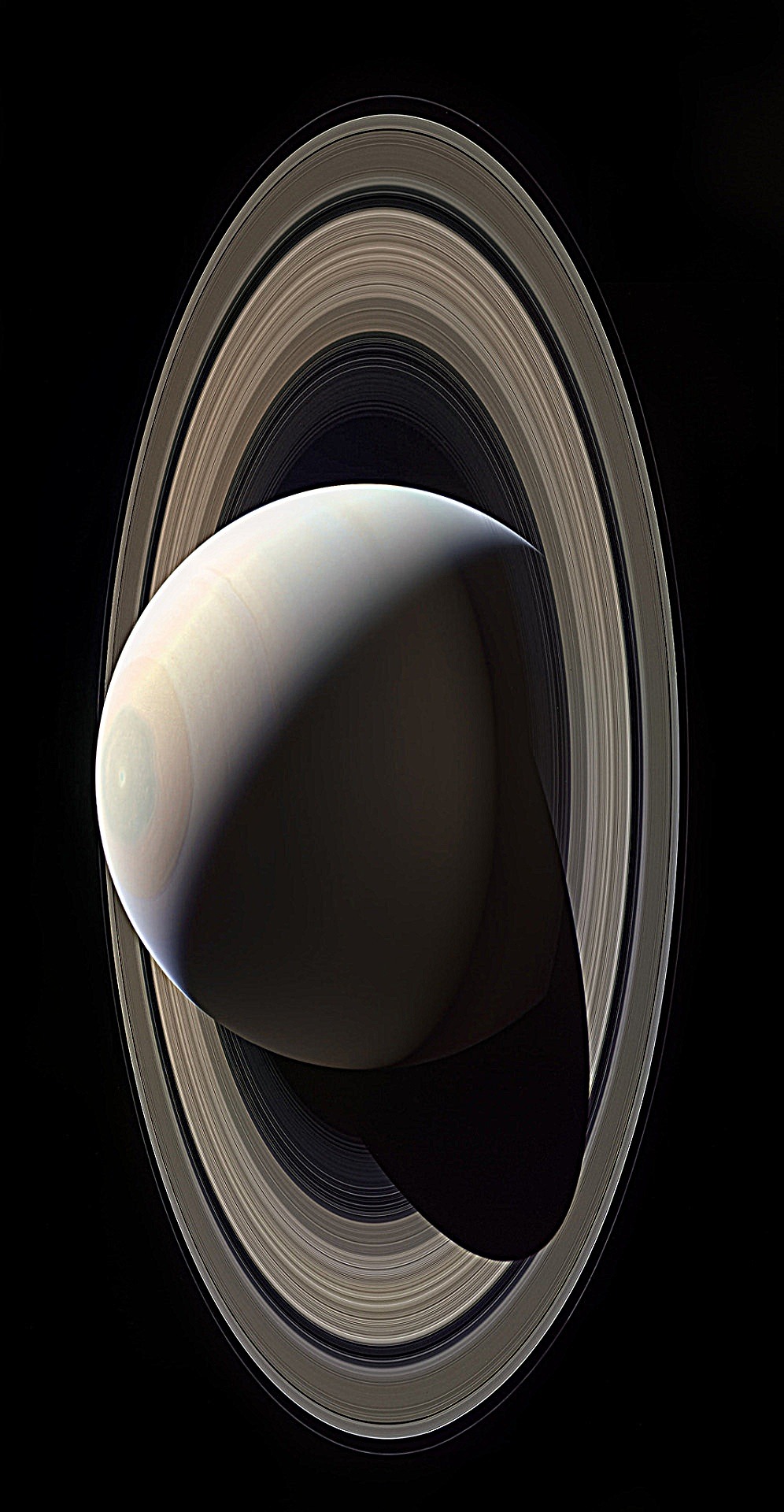
2K notes
·
View notes
Text

Sam Chivers — Black Hole (New Scientist, illustration, 2013)
841 notes
·
View notes
Text
hello! i've got some GROUNDBREAKING space news for you!
scientists have uncovered evidence for a gravitational wave background (GWB) in our universe, and the way they went about it is fascinating.
To fully understand what's going on here, we need to go into a bit of background information.
First of all: what are gravitational waves? gravitational waves are often called 'ripples' in spacetime, often caused by extremely energetic processes such as black holes colliding, or two neutron stars orbiting each other closely.
So, how did scientists figure this out? They used 67 pulsars (known as the Pulsar Timing Array) throughout the Milky Way, practically creating a galaxy-sized telescope in order to study this.
Pulsars are the extremely dense cores of massive stars, left over after they go supernova. These are fascinating on their own, but for this project, they had an essential feature: Pulsars rapidly rotate (think up to hundreds of rotations per second), spewing radiation out in pulses from their magnetic poles. For some pulsars, these radiation jets cross Earth's line of sight, and we get incredibly constant bursts of radio signals, which can be catalogued and used as a sort of standard, universal clock.
Here is a link to a gif showing the rotation of a pulsar. Please be warned for flashing and eyestrain.
For 15 years, a team of astronomers working for the North American Nanohertz Observatory for Gravitational Waves (NANOGrav), used radio telescopes around the globe to track minuscule changes in the signal patterns from pulsars. The changes they found are due to the slight movement of spacetime between us and the pulsars, stretching and compressing the paths of their radio waves as extremely low frequency gravitational waves pass through the universe (yes, that includes you. your atoms, as well as the atoms making up everything around you, are very slowly shifting position, dancing along to the heartbeat of the universe).
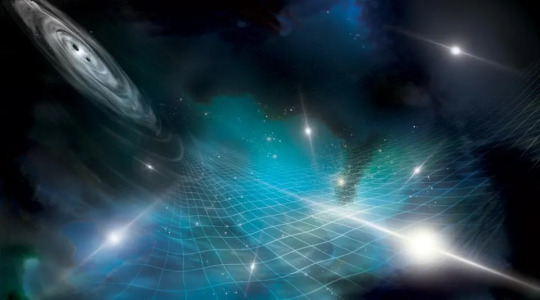
At the moment, scientists are still debating what could have caused this gravitational wave background, but some there are some leading theories: the GWB could be caused by trillions of binary black hole systems (black holes orbiting each other) throughout the universe. It could also be due to cosmic inflation, or even the big bang itself. Scientists just don't know yet, but the opportunities this discovery opens up are incredible.
The knowledge of the GWB could help us better understand the formation of early galaxies, or even help us understand the origin of the universe.
#aspaceinthecosmos#space#astronomy#outer space#just jupiter#astrophysics#gravity#gravitational waves#physics#pulsars#black holes#neutron stars#the universe#LIGO
596 notes
·
View notes
Text


On March 27, 2024, scientists released the first ever image of the edge of the Milky Way's supermassive black hole, Sagittarius A*, in polarized light. Polarized light allows astronomers to map the black hole's magnetic field lines.
This new kind of image allows astronomers to map the black hole's magnetic field lines. The Event Horizon Telescope (EHT), the same collaboration of telescopes that captured the first image of a black hole in 2019, took this groundbreaking image.
This discovery is a big deal because it helps us understand more about how black holes work. The strong magnetic fields around Sagittarius A* may play a role in how the black hole gobbles up matter and launches jets of particles out into space.
#black hole#galaxies#galaxy#astronomy#nasa#astronomers#universe#astrophotography#nasa photos#astrophysics#outer space#nasawebb#hubble space telescope#space science#space exploration#space#planetary science#planetary nebula#science facts#science#i love astronomy#astronomy facts#astrography#astrobiology#astro community#astro notes#astro observations#astro boy#cosmos#our universe
155 notes
·
View notes
Text

#outer#outer space#grunge#aesthetic#aesthetics#space#vintage#universe#alternative#indie#stars#universo#black holes#black hole
2K notes
·
View notes
Text
CAN A BLACK HOLE CREATE A STAR??
Blog#359
Wednesday, December 20th, 2023
Welcome back,
Not all black holes are the destructive monsters they're often made out to be, according to new research done with the Hubble Space Telescope.
Scientists from Montana State University published an article in Nature this week that found a star formation in Henize 2-10, a dwarf starburst galaxy — and they say the black hole at the center of that galaxy actually created them.
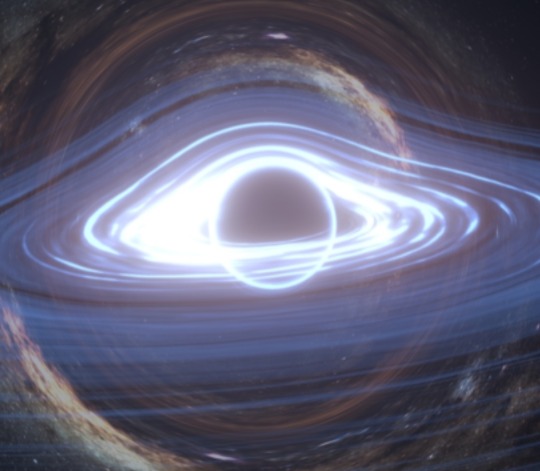
"We conclude that this black-hole outflow triggered the star formation," the authors wrote.
The findings provided insight into a decade-old mystery about whether smaller galaxies had black holes proportional in size to larger ones, according to NASA.

"Ten years ago, as a graduate student thinking I would spend my career on star formation, I looked at the data from Henize 2-10 and everything changed," Amy Reines, a researcher at the University of Virginia and one of the study's authors, told NASA. "From the beginning I knew something unusual and special was happening."
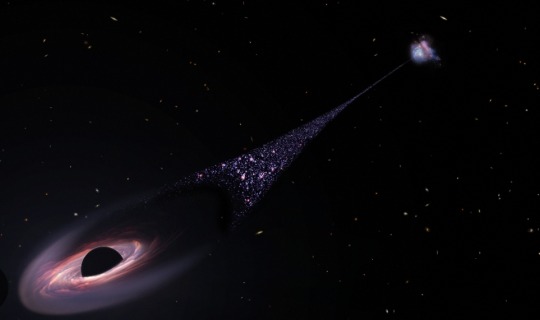
Reines told NASA that she expects even more research into dwarf galaxy black holes in the future. Using them as clues to better understand how supermassive black holes came into existence would solve a persistent problem for astronomers, and NASA reports that of the three leading theories about how black holes are created, none of them stand out as more likely than the others.

"It really has become the big question: where did they come from?" Reines said. "Dwarf galaxies may retain some memory of the black hole seeding scenario that has otherwise been lost to time and space."
It's poetic that an unusually creative black hole defying rules about how black holes are "supposed" to act may actually help scientists understand the most ancient of galactic mysteries.
Originally published on futurism.com
COMING UP!!
(Saturday, December 23rd, 2023)
"HOW MANY TIMES HAS THE SUN TRAVELED AROUND THE MILKY WAY??"
#astronomy#outer space#alternate universe#astrophysics#universe#spacecraft#white universe#parallel universe#space#astrophotography#blackholes#black holes
256 notes
·
View notes
Text

It’s oh-so-easy to be mesmerized by this spiral galaxy known as NGC 4254. Follow its clearly defined arms, which are brimming with stars, to its center, where there may be old star clusters and, sometimes, active supermassive black holes. NASA’s James Webb Space Telescope delivered highly detailed scenes of this spiral galaxy in a combination of near- and mid-infrared light.
Image Credit & Copyright: NASA, ESA, CSA, STScI, Janice Lee (STScI), Thomas Williams (Oxford), and the PHANGS team
#astronomy#space#science#universe#galaxy#spiral galaxy#spiral#stars#hot stars#young stars#supermassive black hole#black hole#supermassive#James Webb#james webb space telescope#jwst#star clusters#star#cluster#star cluster#follow#like#reblog#the first star#the first starr#thefirststar#thefirststarr#nasa#apod#tumblr
149 notes
·
View notes
Text
black hole
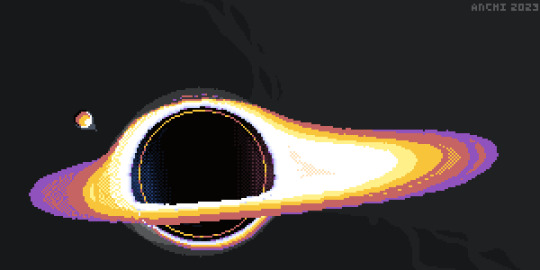
#space#art#Galaxy#Universe#outer space#my artwork#my art#pixel art#illustration#digital art#drawing#aseprite#ドット絵#artists on tumblr#black hole
492 notes
·
View notes
Text
415 notes
·
View notes
Photo
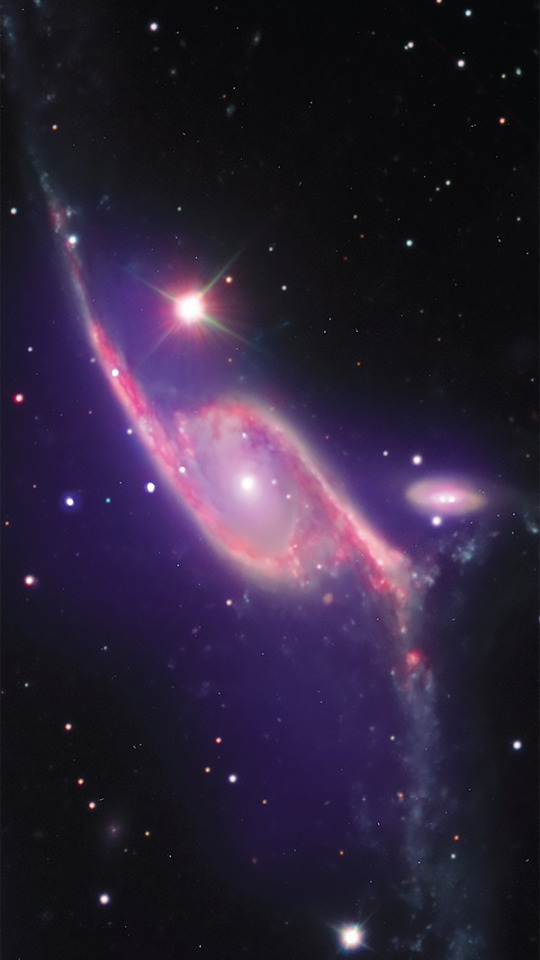
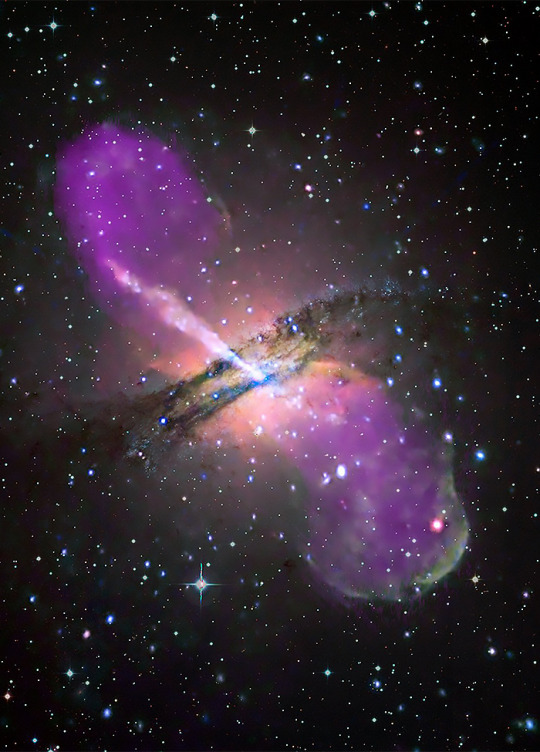

Chandra shows black holes.(x/x/x)
#nasa#chandra observatory#space#black holes#astronomy#astrophotography#stars#galaxy#universe#cosmos#hercules a#centaurus a#ic 4970#solar system#planet
3K notes
·
View notes
Text
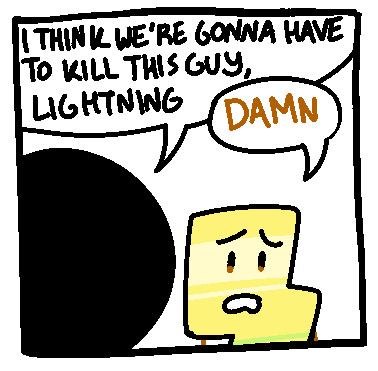
Death Pa
#battle for dream island#bfdi#bfb#tpot#bfb black hole#bfb lightning#pink draws#yeah based on that silly steven universe comic panel
489 notes
·
View notes
Text

"Milky Way black hole"
The Event Horizon Telescope (EHT) collaboration, who produced the first ever image of our Milky Way black hole released in 2022, has captured a new view of the massive object at the center of our Galaxy: how it looks in polarized light.
This is the first time astronomers have been able to measure polarization, a signature of magnetic fields, this close to the edge of Sagittarius A*.
This image shows the polarized view of the Milky Way black hole. The lines mark the orientation of polarization, which is related to the magnetic field around the shadow of the black hole. Image
Photo: EHT Collaboration, CC-BY-NC-SA
#art#cosmos#cosmic#universe#blast#space#photography#milky way#black hole#eht#polarization#sagittarius A*
92 notes
·
View notes
Text
12 Great Gifts from Astronomy
This is a season where our thoughts turn to others and many exchange gifts with friends and family. For astronomers, our universe is the gift that keeps on giving. We’ve learned so much about it, but every question we answer leads to new things we want to know. Stars, galaxies, planets, black holes … there are endless wonders to study.
In honor of this time of year, let’s count our way through some of our favorite gifts from astronomy.
Our first astronomical gift is … one planet Earth
So far, there is only one planet that we’ve found that has everything needed to support life as we know it — Earth. Even though we’ve discovered over 5,200 planets outside our solar system, none are quite like home. But the search continues with the help of missions like our Transiting Exoplanet Survey Satellite (TESS). And even you (yes, you!) can help in the search with citizen science programs like Planet Hunters TESS and Backyard Worlds.

Our second astronomical gift is … two giant bubbles
Astronomers found out that our Milky Way galaxy is blowing bubbles — two of them! Each bubble is about 25,000 light-years tall and glows in gamma rays. Scientists using data from our Fermi Gamma-ray Space Telescope discovered these structures in 2010, and we're still learning about them.

Our third astronomical gift is … three types of black holes
Most black holes fit into two size categories: stellar-mass goes up to hundreds of Suns, and supermassive starts at hundreds of thousands of Suns. But what happens between those two? Where are the midsize ones? With the help of NASA’s Hubble Space Telescope, scientists found the best evidence yet for that third, in between type that we call intermediate-mass black holes. The masses of these black holes should range from around a hundred to hundreds of thousands of times the Sun’s mass. The hunt continues for these elusive black holes.

Our fourth and fifth astronomical gifts are … Stephan’s Quintet
When looking at this stunning image of Stephan’s Quintet from our James Webb Space Telescope, it seems like five galaxies are hanging around one another — but did you know that one of the galaxies is much closer than the others? Four of the five galaxies are hanging out together about 290 million light-years away, but the fifth and leftmost galaxy in the image below — called NGC 7320 — is actually closer to Earth at just 40 million light-years away.

Our sixth astronomical gift is … an eclipsing six-star system
Astronomers found a six-star system where all of the stars undergo eclipses, using data from our TESS mission, a supercomputer, and automated eclipse-identifying software. The system, called TYC 7037-89-1, is located 1,900 light-years away in the constellation Eridanus and the first of its kind we’ve found.
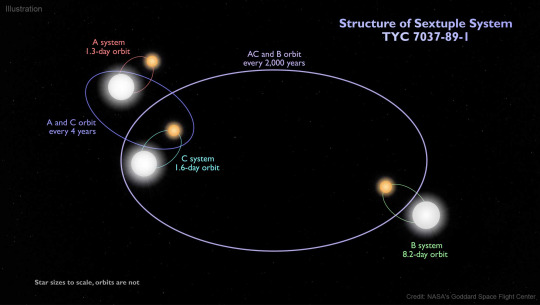
Our seventh astronomical gift is … seven Earth-sized planets
In 2017, our now-retired Spitzer Space Telescope helped find seven Earth-size planets around TRAPPIST-1. It remains the largest batch of Earth-size worlds found around a single star and the most rocky planets found in one star’s habitable zone, the range of distances where conditions may be just right to allow the presence of liquid water on a planet’s surface.
Further research has helped us understand the planets’ densities, atmospheres, and more!
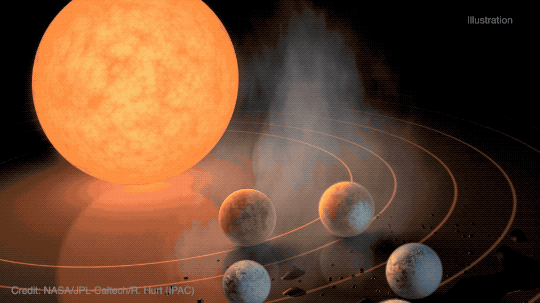
Our eighth astronomical gift is … an (almost) eight-foot mirror
The primary mirror on our Nancy Grace Roman Space Telescope is approximately eight feet in diameter, similar to our Hubble Space Telescope. But Roman can survey large regions of the sky over 1,000 times faster, allowing it to hunt for thousands of exoplanets and measure light from a billion galaxies.
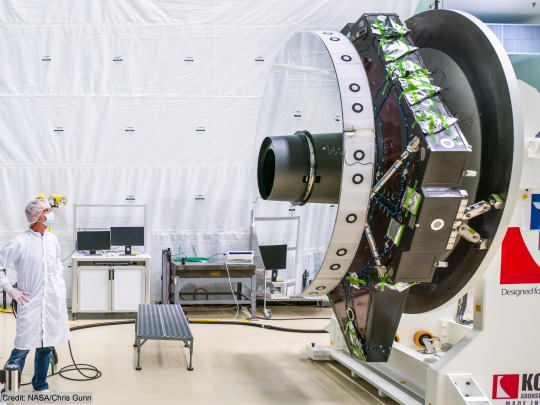
Our ninth astronomical gift is … a kilonova nine days later
In 2017, the National Science Foundation (NSF)’s Laser Interferometer Gravitational-Wave Observatory (LIGO) and European Gravitational Observatory’s Virgo detected gravitational waves from a pair of colliding neutron stars. Less than two seconds later, our telescopes detected a burst of gamma rays from the same event. It was the first time light and gravitational waves were seen from the same cosmic source. But then nine days later, astronomers saw X-ray light produced in jets in the collision’s aftermath. This later emission is called a kilonova, and it helped astronomers understand what the slower-moving material is made of.

Our tenth astronomical gift is … NuSTAR’s ten-meter-long mast
Our NuSTAR X-ray observatory is the first space telescope able to focus on high-energy X-rays. Its ten-meter-long (33 foot) mast, which deployed shortly after launch, puts NuSTAR’s detectors at the perfect distance from its reflective optics to focus X-rays. NuSTAR recently celebrated 10 years since its launch in 2012.

Our eleventh astronomical gift is … eleven days of observations
How long did our Hubble Space Telescope stare at a seemingly empty patch of sky to discover it was full of thousands of faint galaxies? More than 11 days of observations came together to capture this amazing image — that’s about 1 million seconds spread over 400 orbits around Earth!
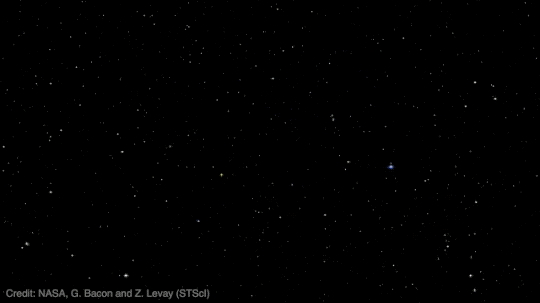
Our twelfth astronomical gift is … a twelve-kilometer radius
Pulsars are collapsed stellar cores that pack the mass of our Sun into a whirling city-sized ball, compressing matter to its limits. Our NICER telescope aboard the International Space Station helped us precisely measure one called J0030 and found it had a radius of about twelve kilometers — roughly the size of Chicago! This discovery has expanded our understanding of pulsars with the most precise and reliable size measurements of any to date.

Stay tuned to NASA Universe on Twitter and Facebook to keep up with what’s going on in the cosmos every day. You can learn more about the universe here.
Make sure to follow us on Tumblr for your regular dose of space!
#NASA#spaceblr#astronomy#space#universe#astrophysics#science#cosmos#exoplanets#black holes#stars#galaxies#gravity#hubble space telescope#james webb space telescope#international space station
1K notes
·
View notes
Text

A Black Hole in M87's Center? - March 5th, 1996.
"The center of nearby giant galaxy M87 is a dense and violent place. In this 1994 photograph by the Hubble Space Telescope, a disk of hot gas was found to be orbiting at the center of this massive elliptical galaxy. The disk is evident on the lower left of the above photograph. The rotation speed of gas in this disk indicates the mass of the object the gas is orbiting, while the size of the disk indicates an approximate volume of the central object. These observations yield a central density so high that the only hypothesised object that could live there is a black hole. The picture also shows a highly energetic jet emanating from the central object. The jet is composed of fast moving charged particles and has broken into knots as small as 10 light years across."
104 notes
·
View notes